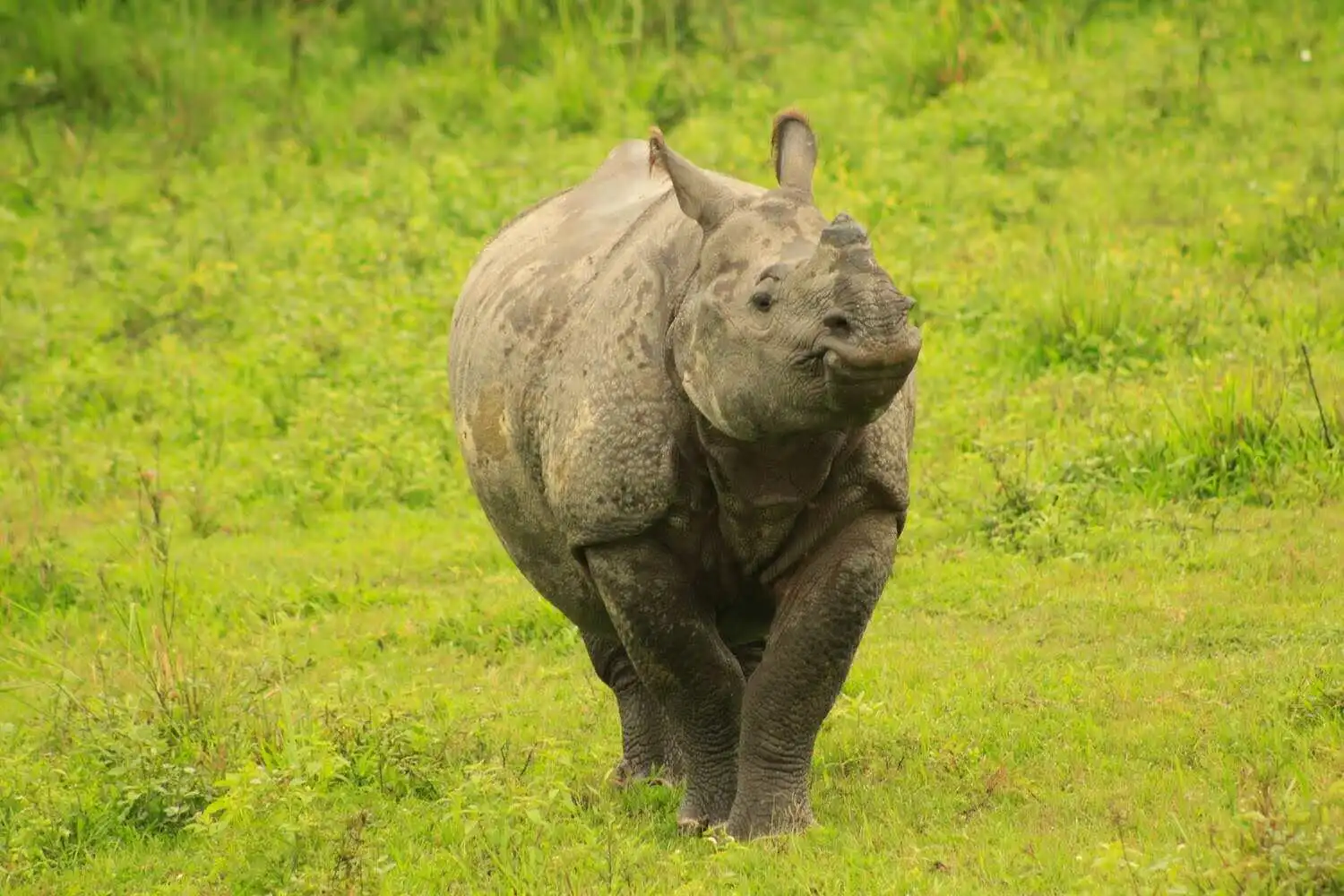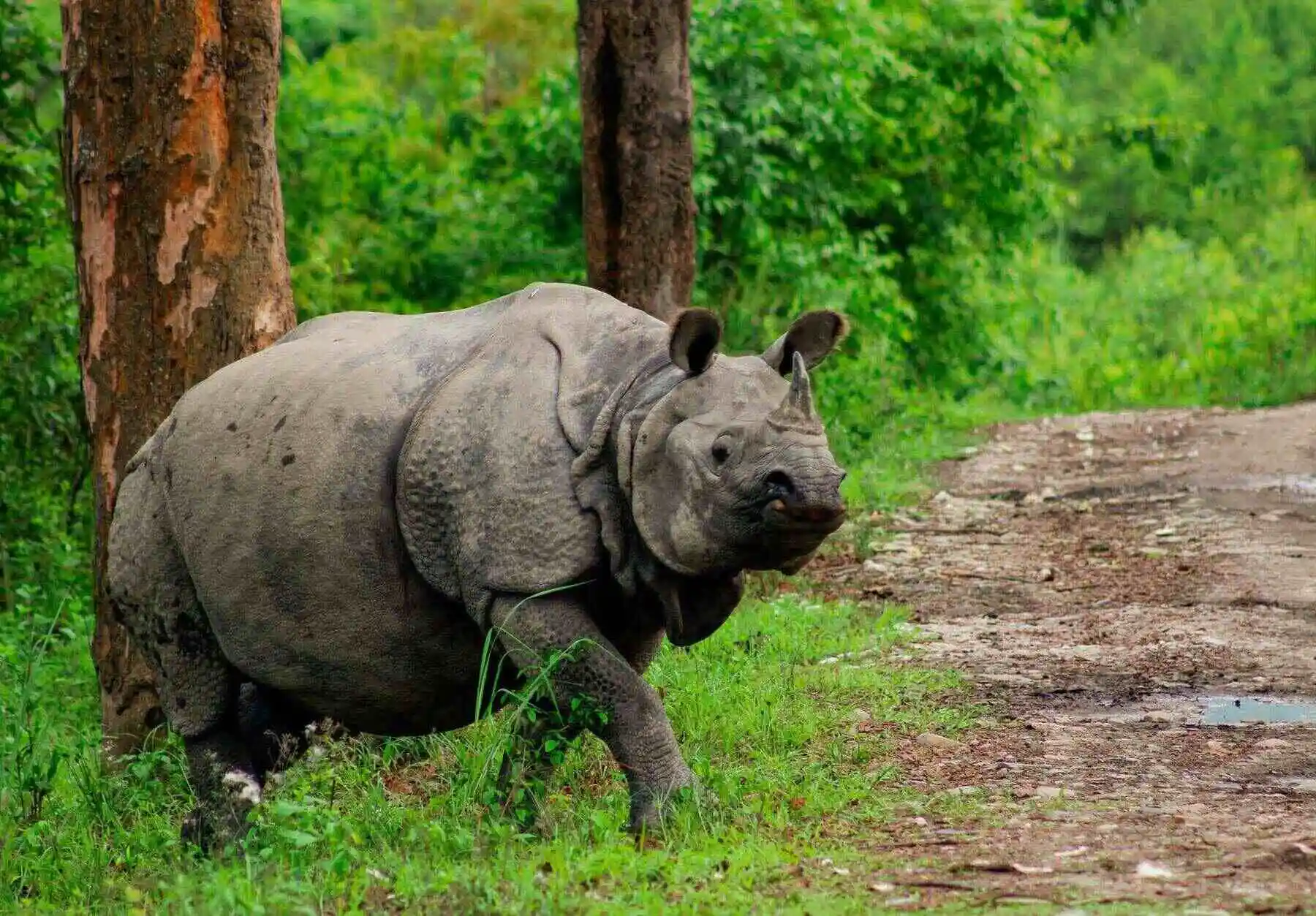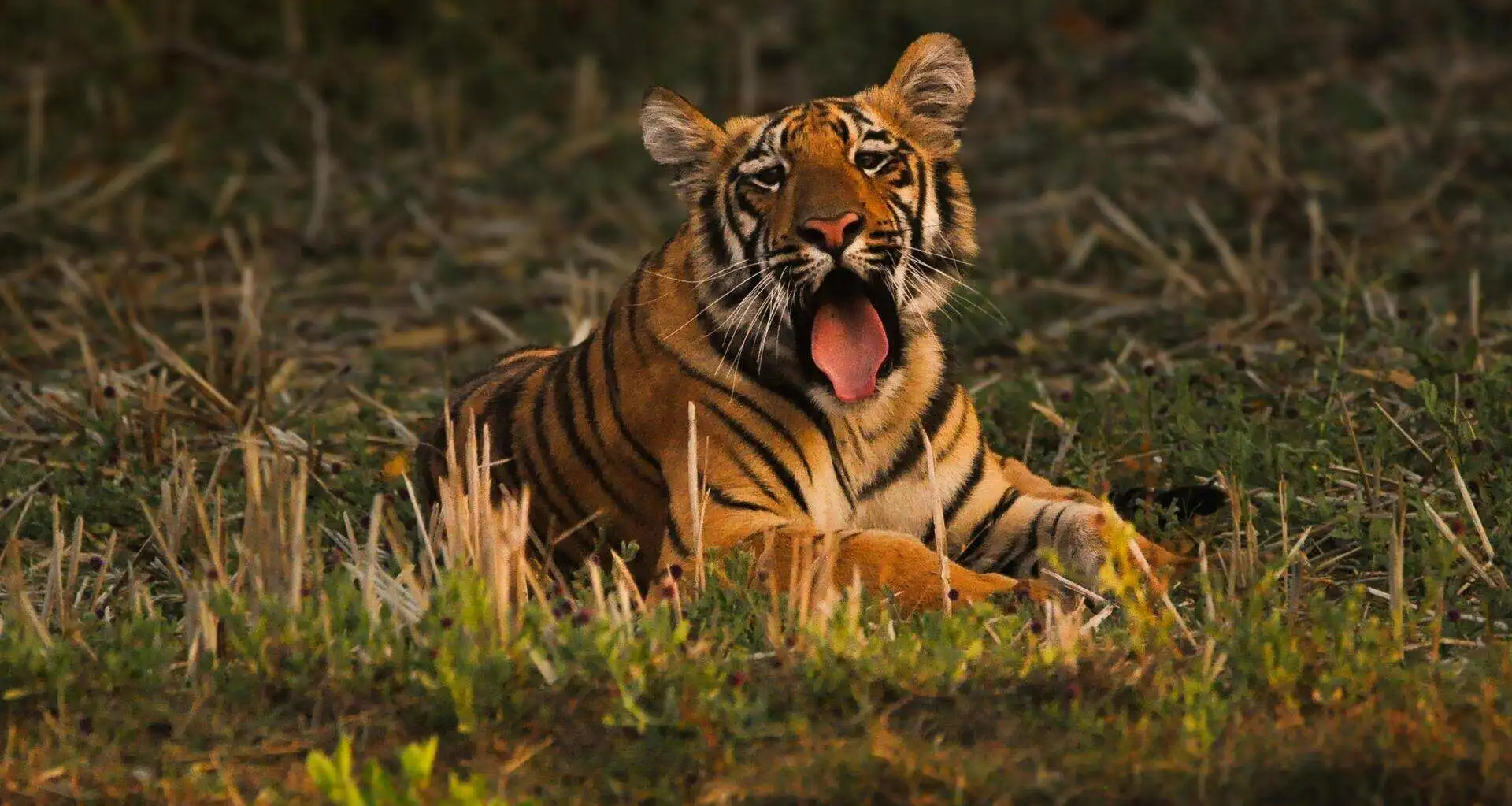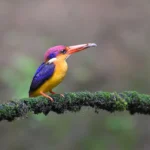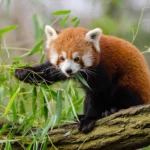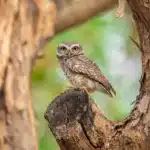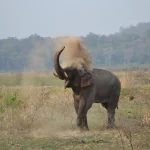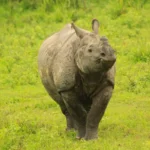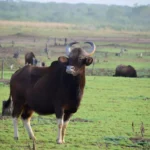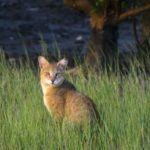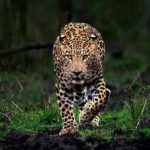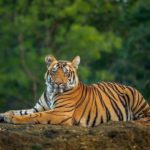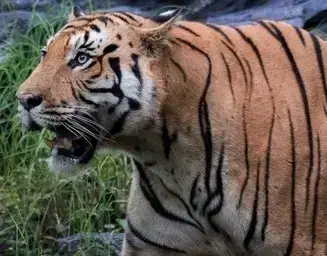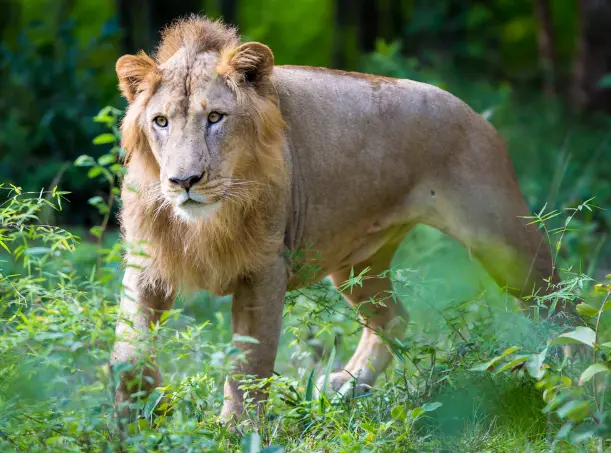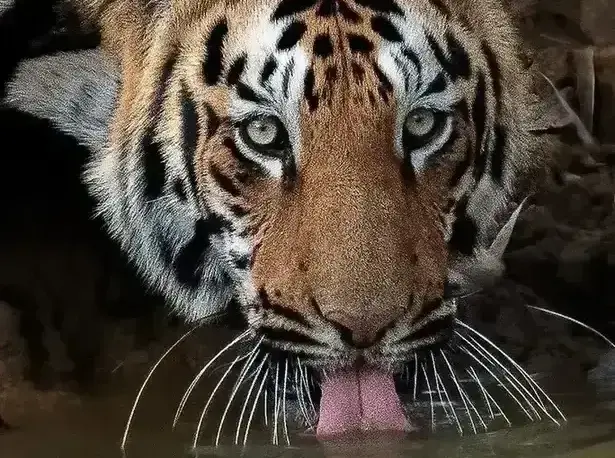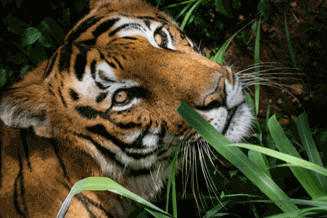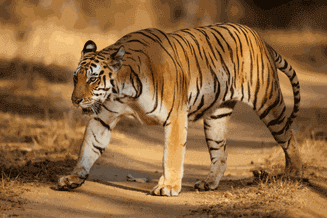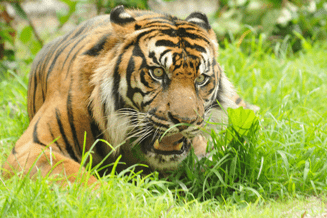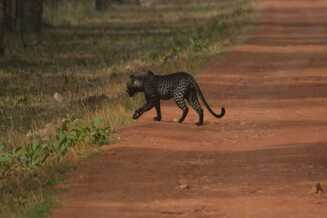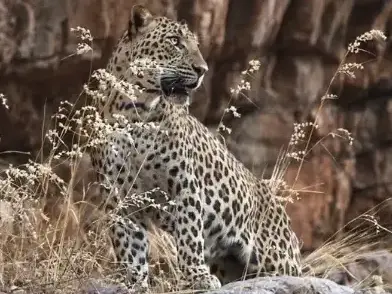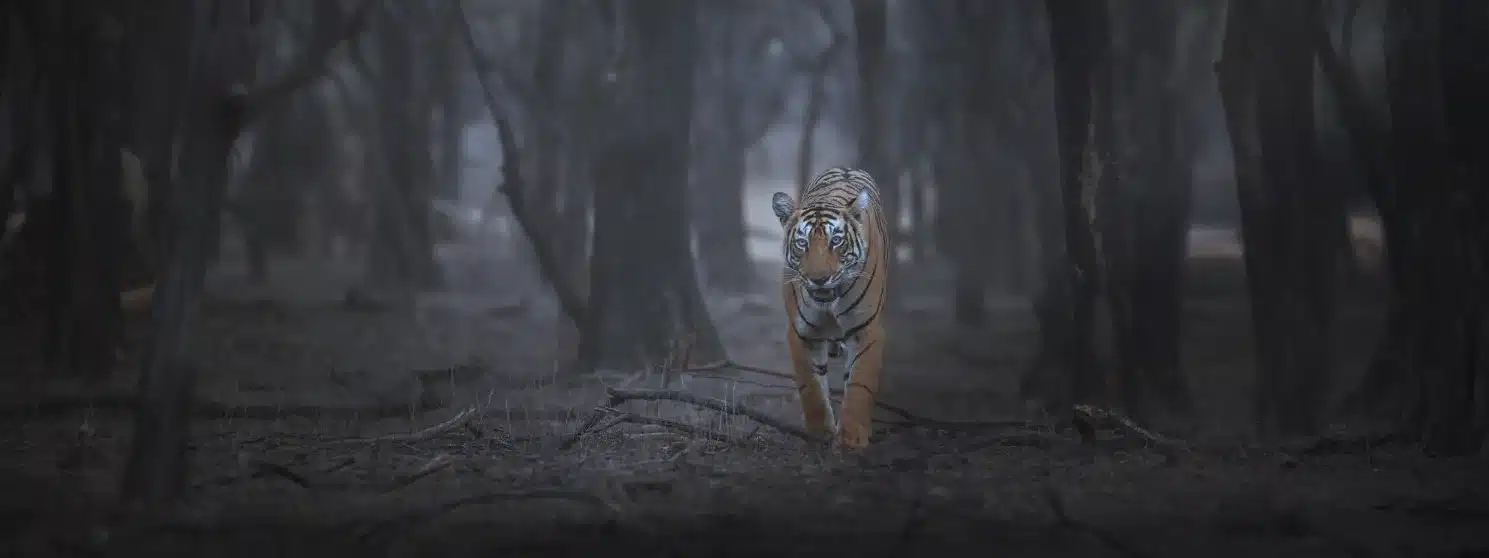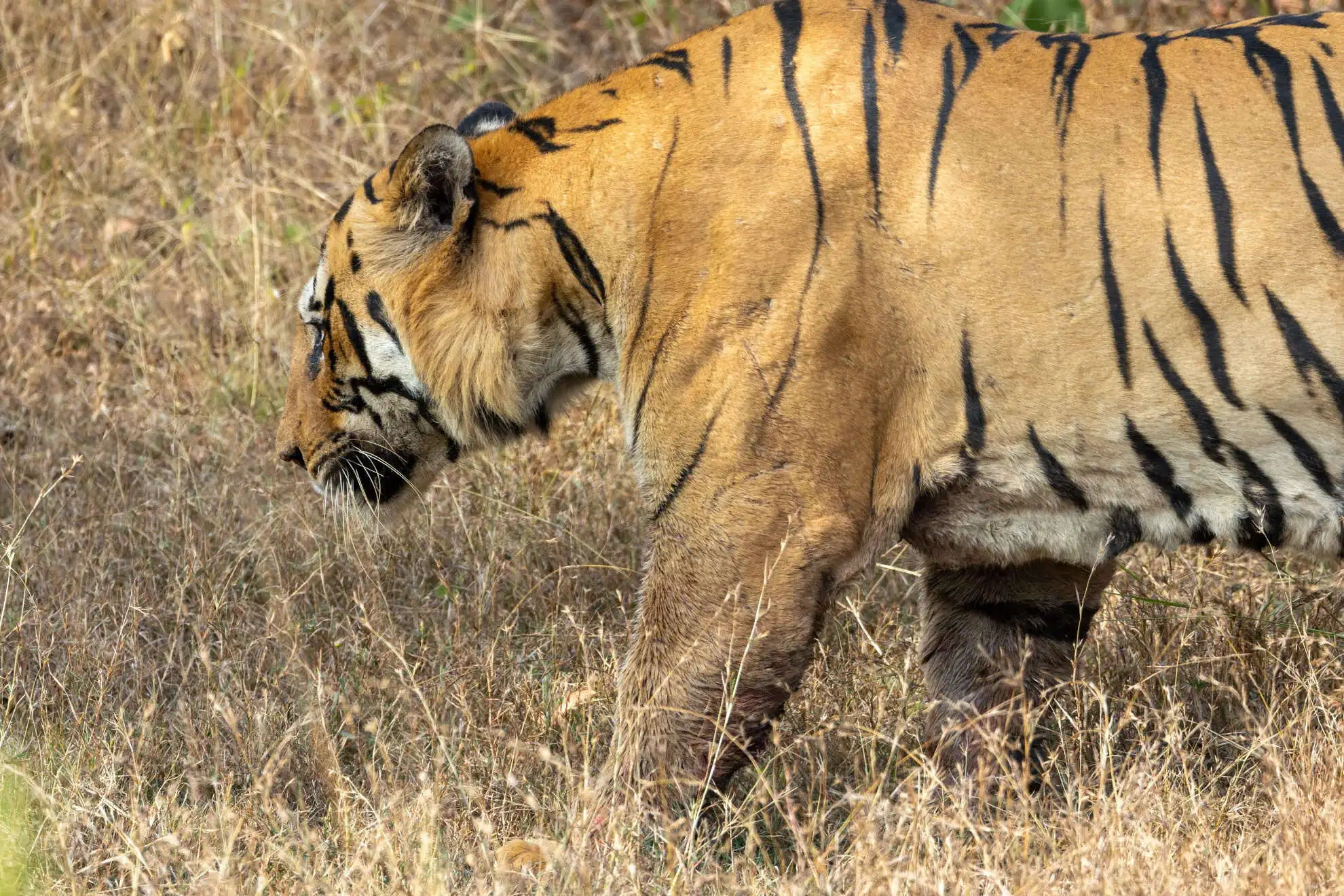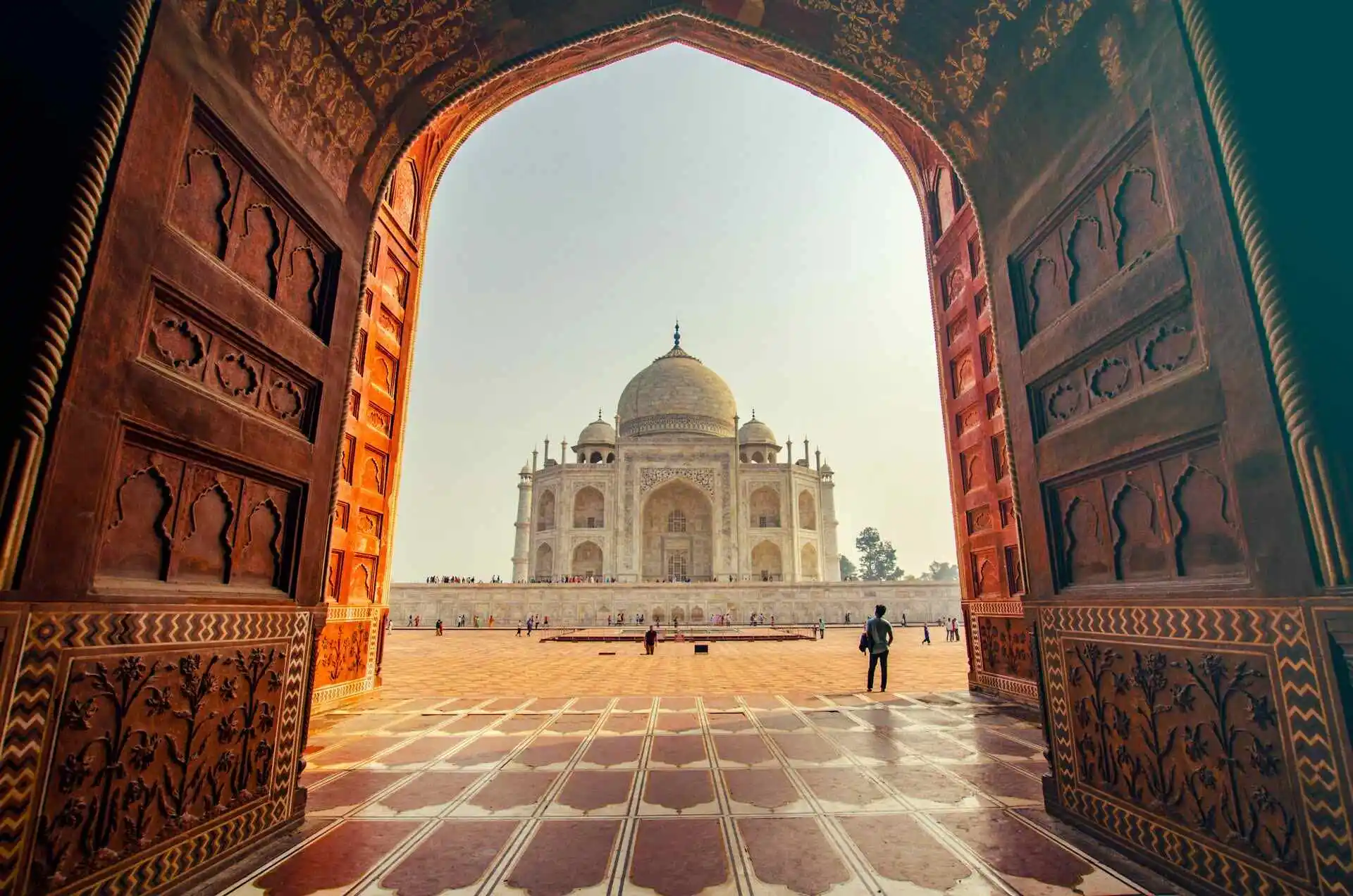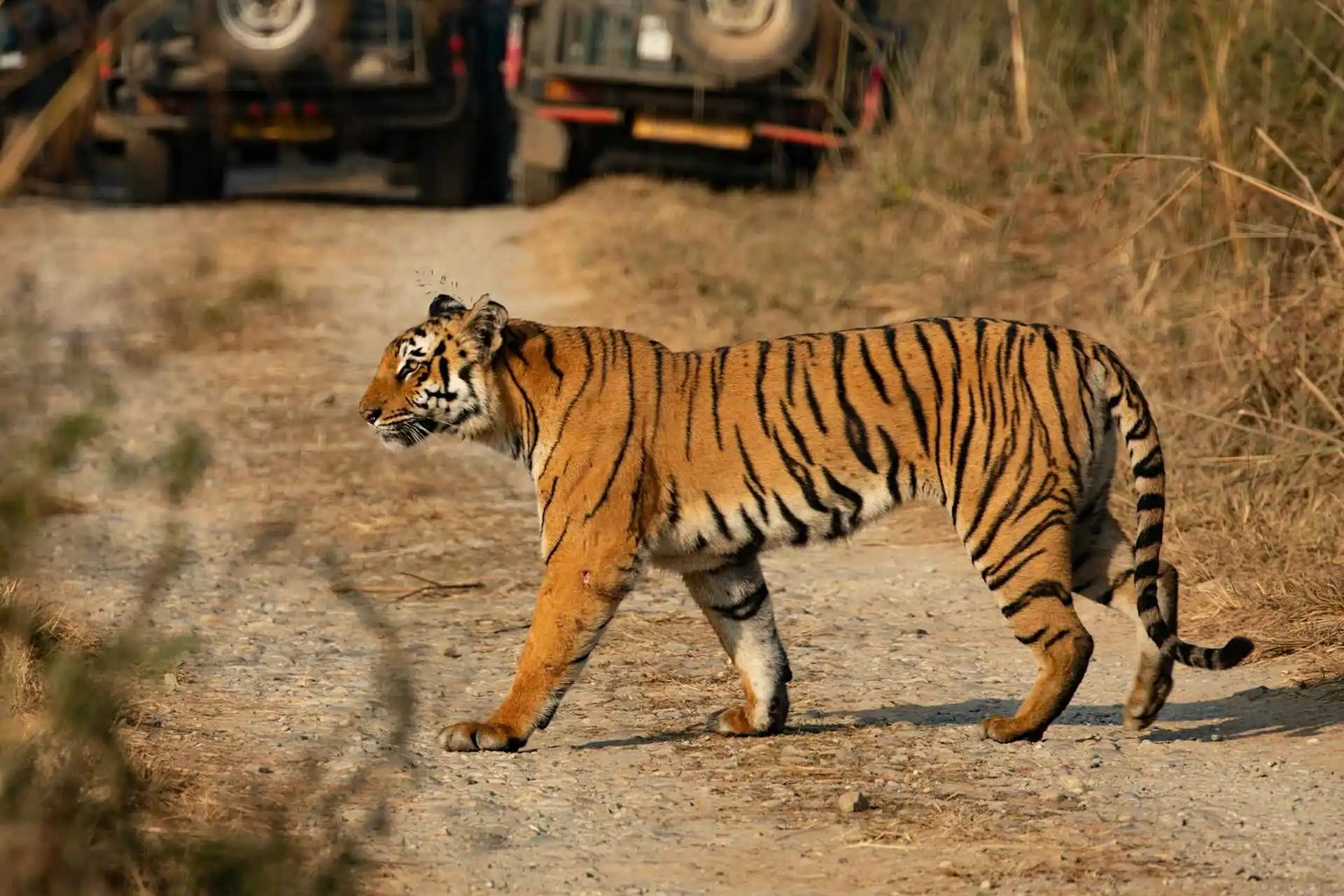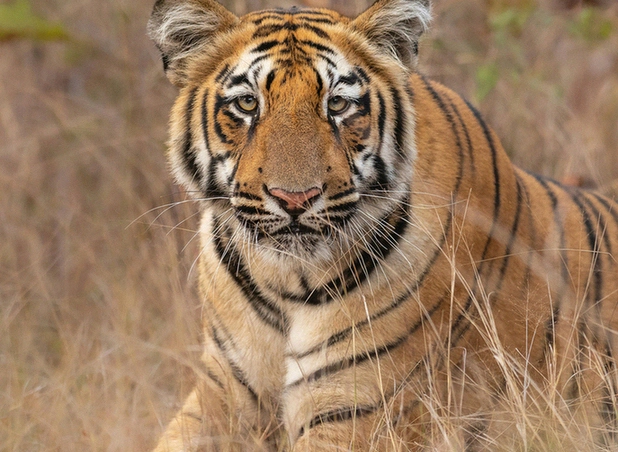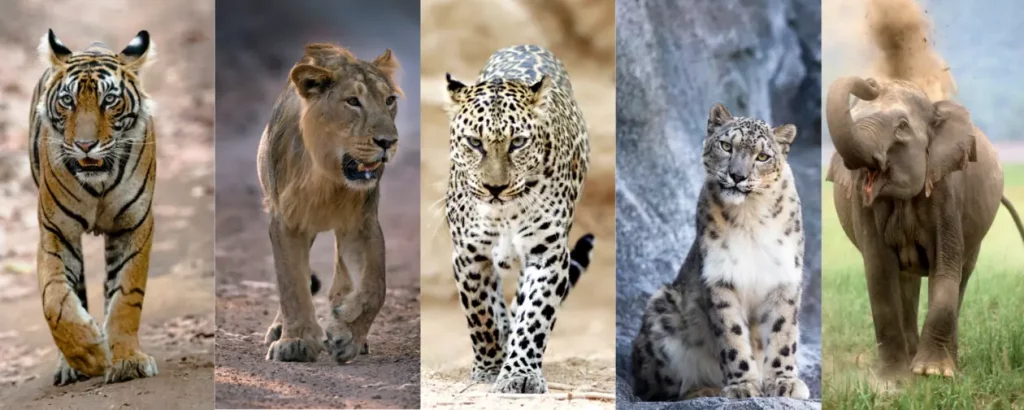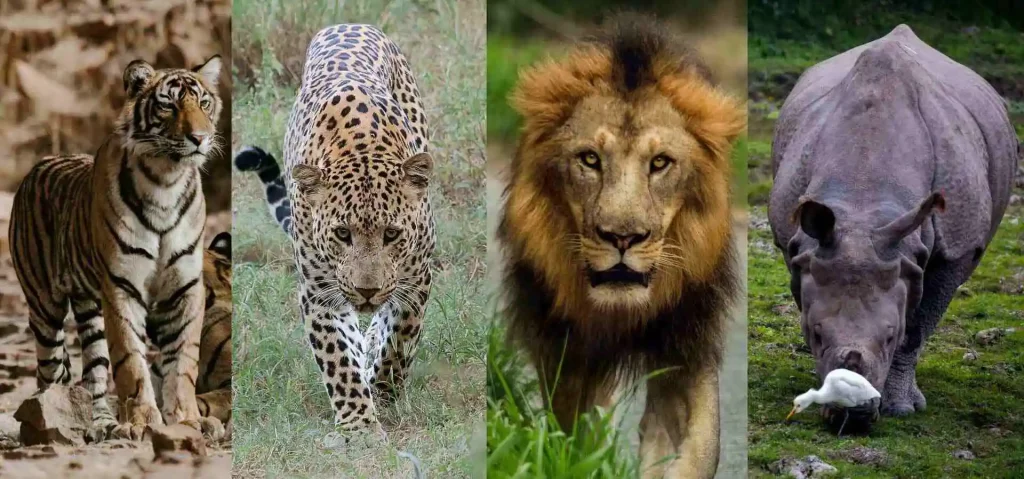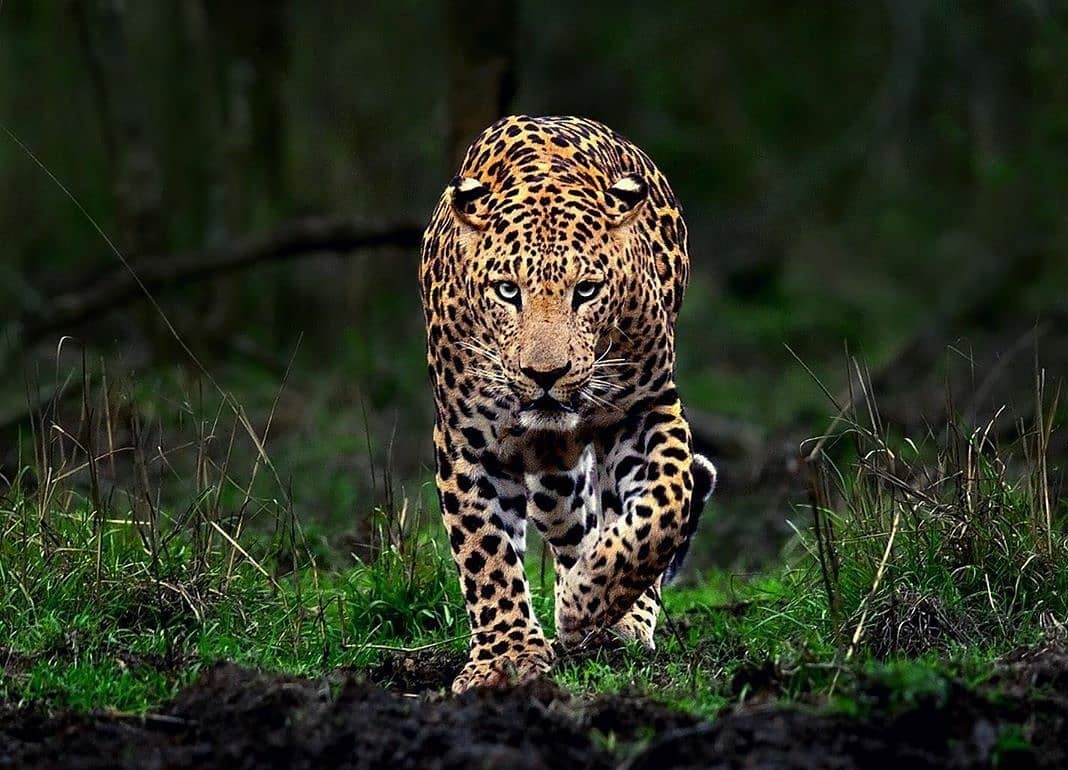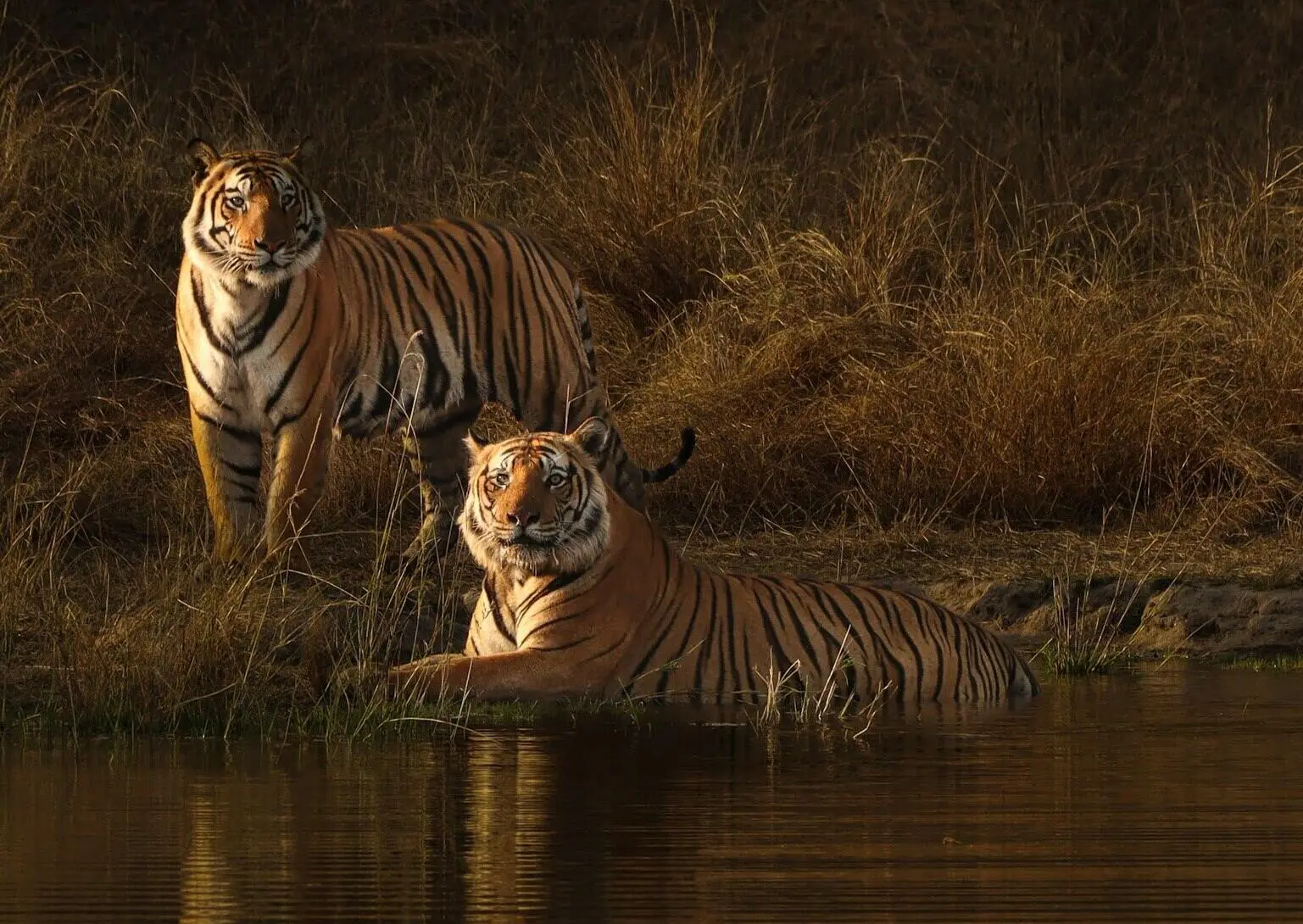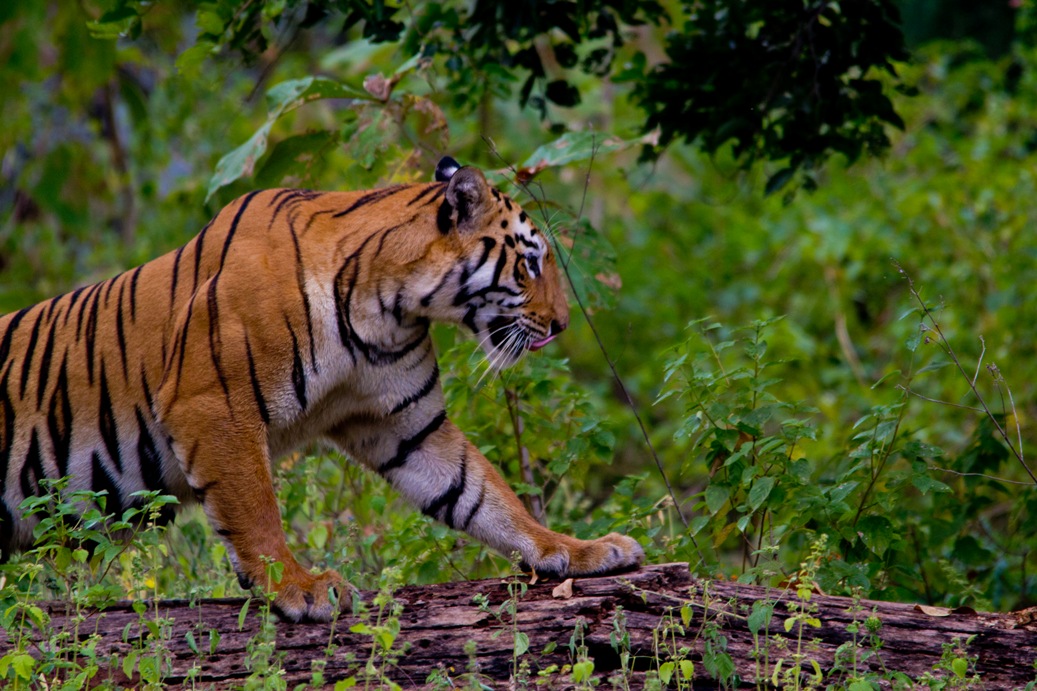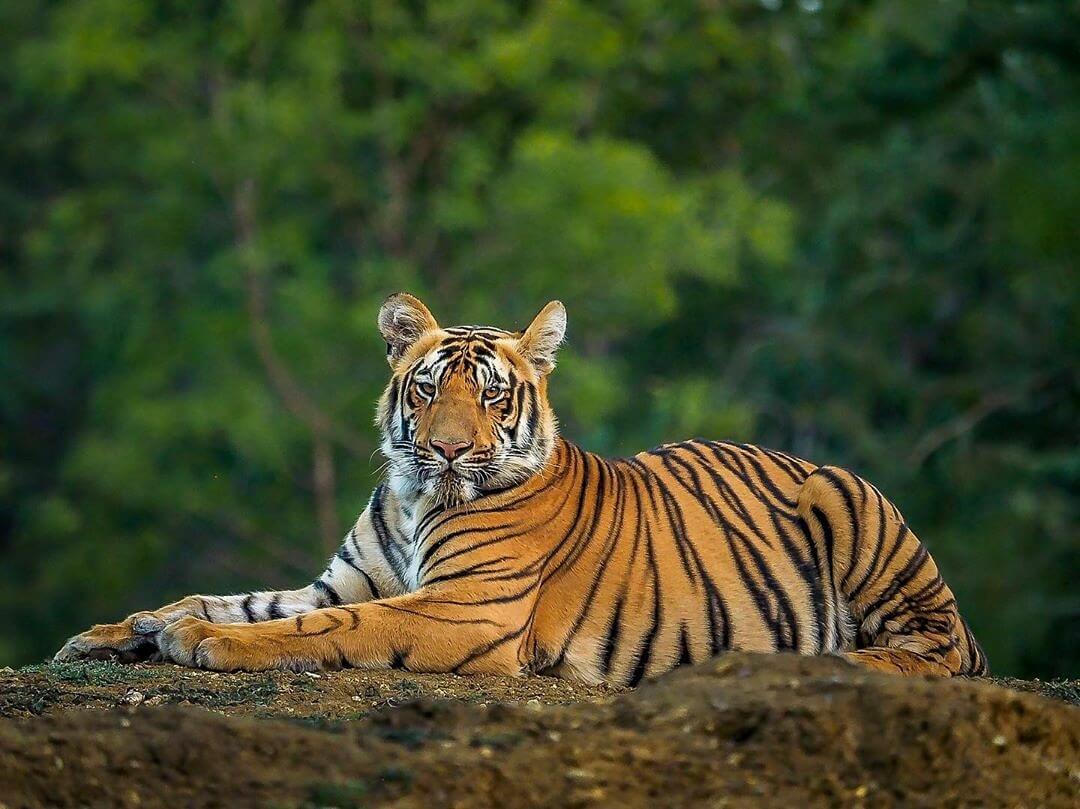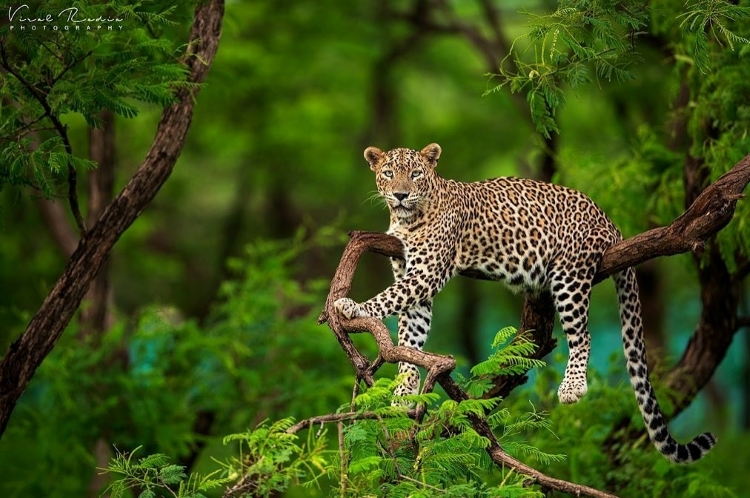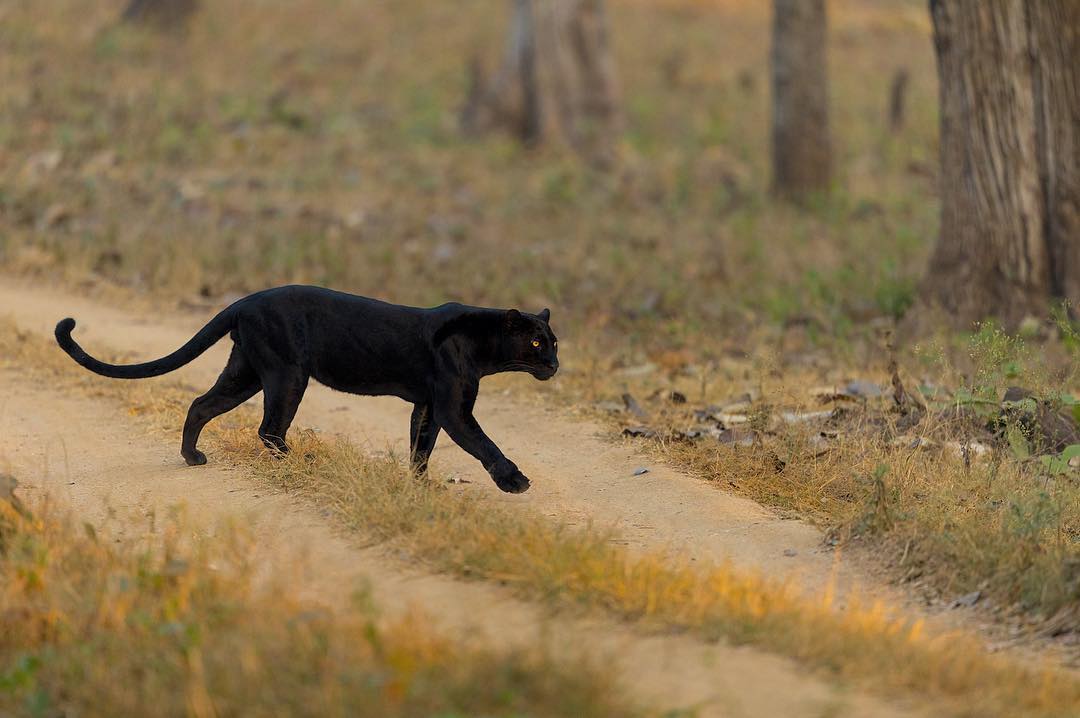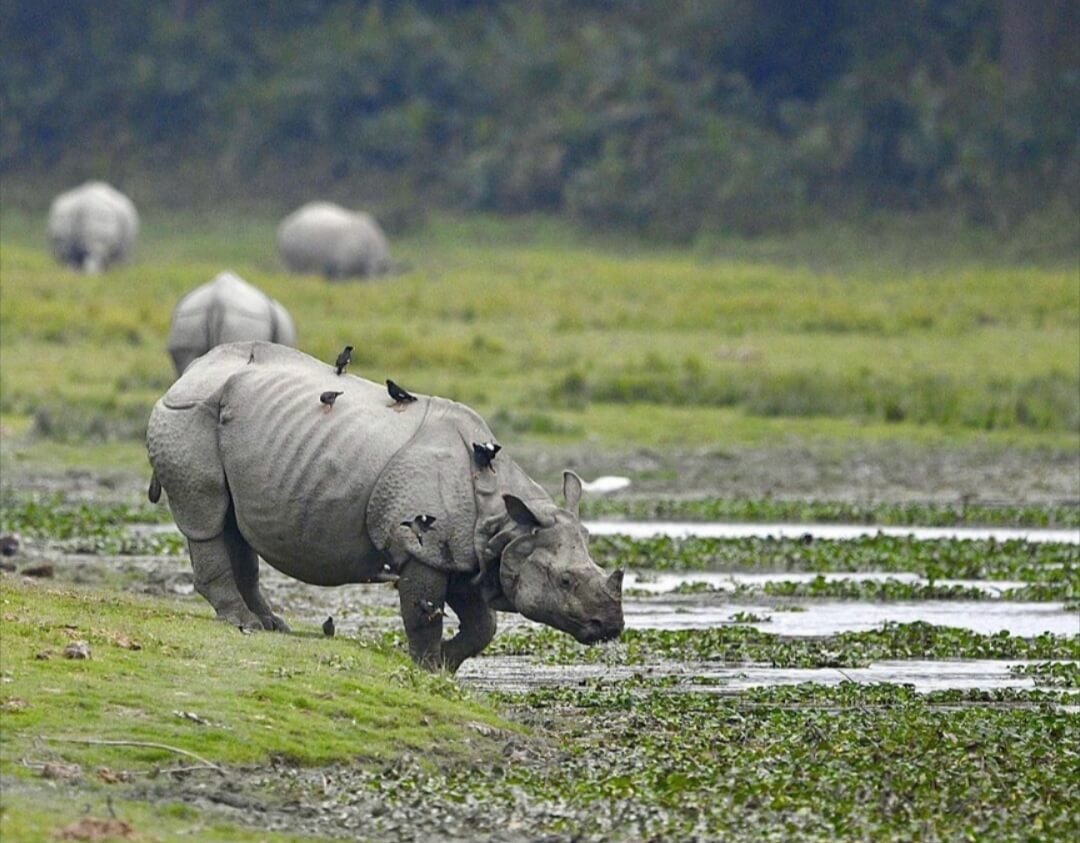Did you know that the Indian rhinoceros, also known as the one-horned rhino, has skin that resembles armor plates? These thick, folded layers look like something out of ancient mythology, but they’re perfectly adapted to protect this magnificent creature from thorny undergrowth and rival rhinos. Found in the wetlands and grasslands of India and Nepal, these giants are known for their solitary nature, except when they gather at favorite waterholes to wallow and cool down.
The Mighty Giant of the Grasslands
The Indian One-Horned Rhinoceros (Rhinoceros unicornis) is one of India’s most iconic and majestic wildlife species. Known for its thick, armor-like skin and solitary nature, this giant herbivore roams the floodplains and grasslands of northern India and Nepal. Once widely spread across the Indian subcontinent, today, the species is found mainly in protected areas, thanks to successful conservation efforts.
Once on the brink of extinction due to poaching and habitat loss, the population has now recovered to over 4,000 individuals. However, the species is still classified as Vulnerable on the IUCN Red List.
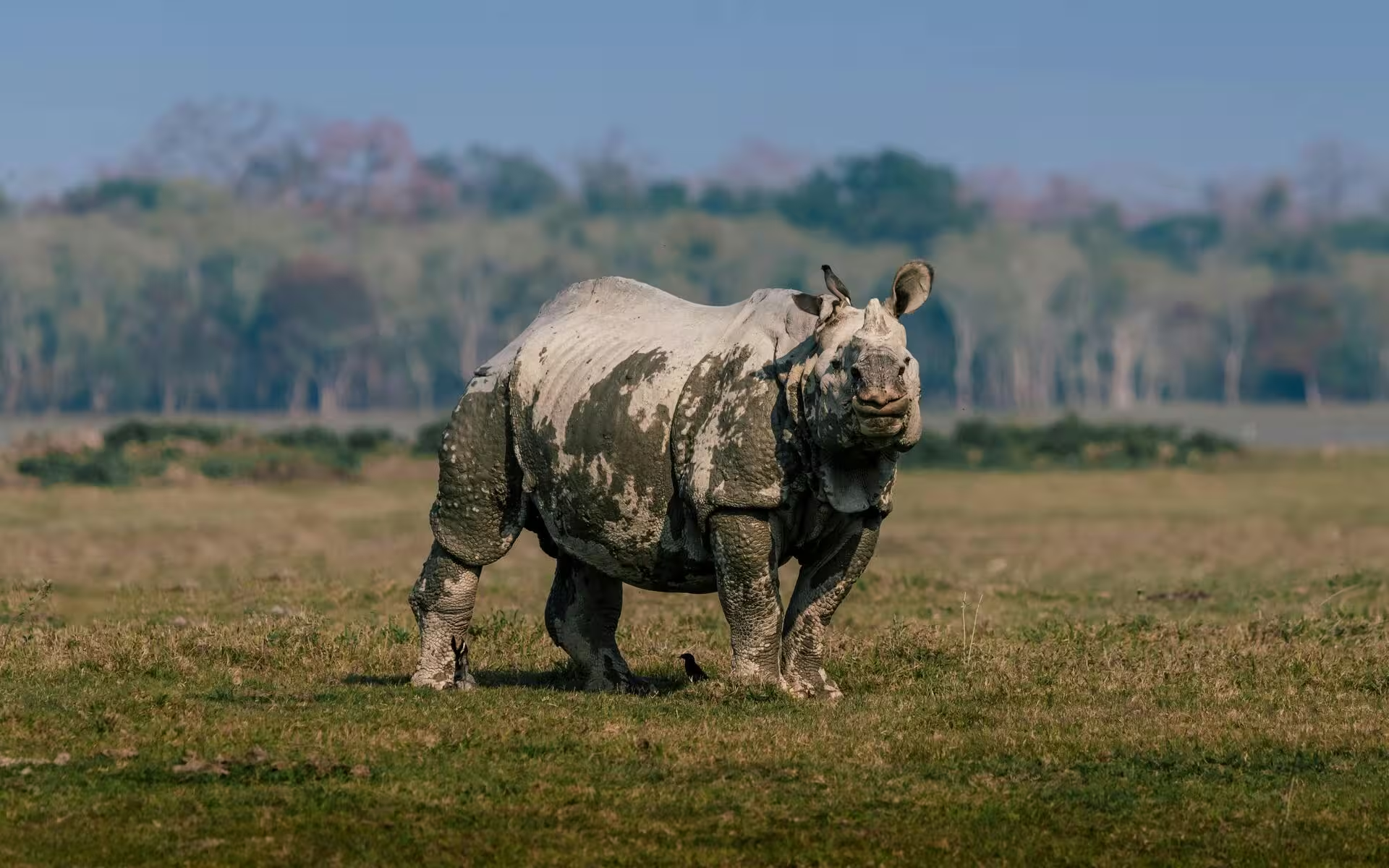
Single-Horned Rhino in Kaziranga
Physical Features & Unique Adaptations
- The Indian rhino is the largest of all Asian rhino species, with males weighing between 1,800 to 2,700 kg.
- It stands 5.7–6.5 feet tall at the shoulder, making it one of the tallest land mammals in India.
- Unlike African rhinos, which have two horns, this species has just one black horn that can grow up to 25 cm (10 inches) long.
- Its thick grey-brown skin forms natural armor-like plates, offering protection against predators and fights with other rhinos.
- Rhinos have poor eyesight, but their sense of smell and hearing are excellent, helping them detect threats from afar.
Key Characteristics of One-Horned Rhino
| Feature | Details |
|---|---|
| Scientific Name | Rhinoceros unicornis |
| Average Height | 5.7–6.5 feet at the shoulder |
| Weight | 1,800–2,700 kg (males heavier than females) |
| Lifespan | 35–45 years in the wild |
| Diet | Herbivorous (grass, leaves, fruits, aquatic plants) |
| Habitat | Grasslands, wetlands, and floodplains |
| Conservation Status | Vulnerable (but recovering due to conservation) |
Habitat & Lifestyle
The Indian One-Horned Rhinoceros thrives in tall grasslands, wetlands, and riverine forests. It prefers areas near water bodies, as it enjoys wallowing in mud and water to regulate body temperature and ward off parasites.
- Primary habitat: The floodplains of the Brahmaputra, Ganges, and Indus rivers.
- Daily routine: Rhinos are most active in the early morning and late afternoon, spending much of the day resting in water or mud.
Diet and Feeding Habits
The Indian rhino is a strict herbivore, feeding primarily on:
- Grasses (its favorite food, especially tall elephant grass)
- Leaves and branches from shrubs and trees
- Aquatic plants found in wetlands
- Fruits and crops, especially when it ventures close to human settlements
Using its prehensile upper lip, the rhino skillfully grasps and pulls vegetation, making feeding easier. It consumes about 40 kg of food daily, and since it drinks water multiple times a day, it stays close to rivers and ponds.
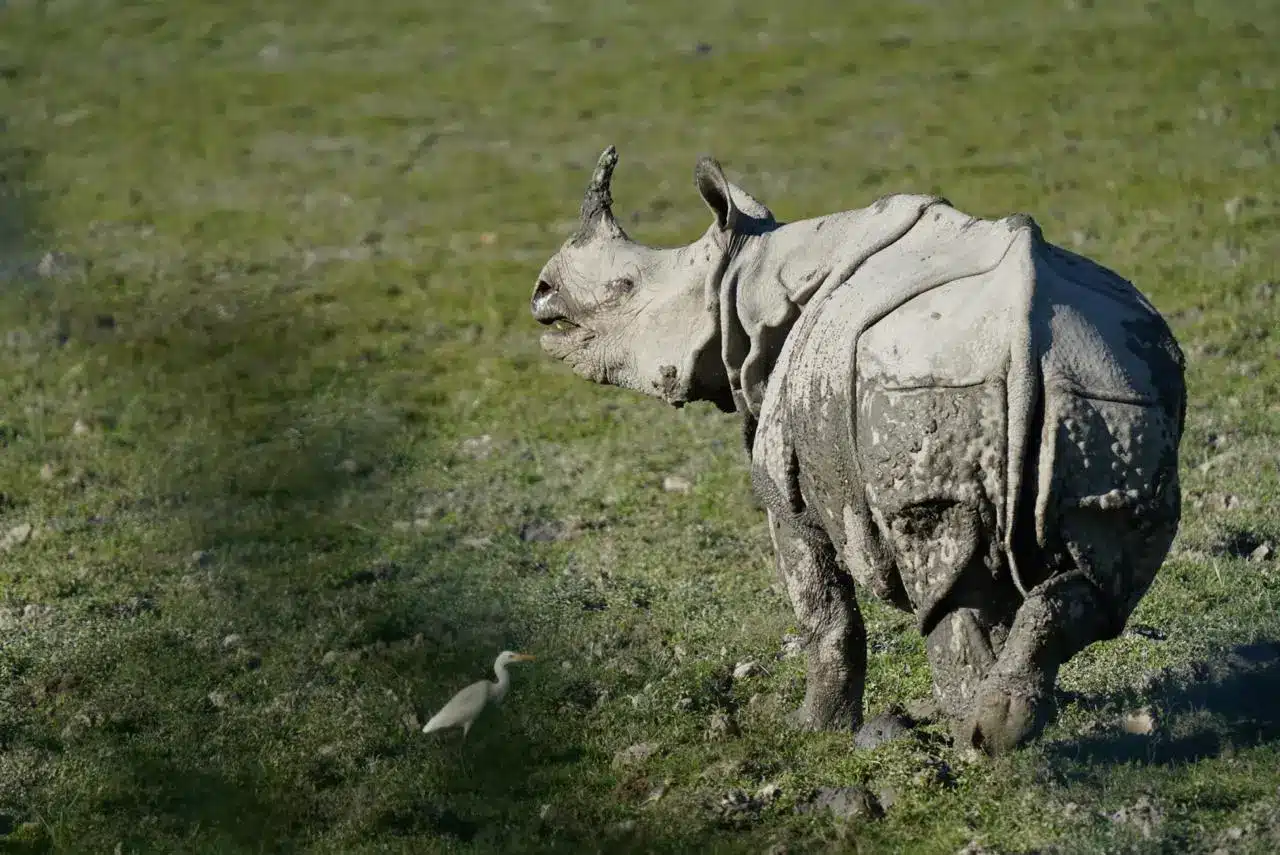
Mud Covered Single Horned Rhino
Behavior & Social Structure
Indian rhinos are mostly solitary except during mating or when mothers are raising their calves. However, they are not completely territorial and often tolerate other rhinos grazing nearby.
- Males are usually more aggressive and may fight over territory and mates.
- Despite their heavy build, rhinos can run at speeds of up to 40 km/h when threatened.
- They communicate using grunts, honks, and growls, and they also use scent marking to establish dominance.
Breeding & Life Cycle
- Mating season: Throughout the year, but mostly between August and April.
- Gestation period: Around 15–16 months (one of the longest among land mammals).
- Birth: A female gives birth to a single calf, which stays with her for nearly 2–4 years before becoming independent.
- Lifespan: Rhinos can live up to 35–45 years in the wild.
Role of Rhinos in the Ecosystem
Rhinos do more than just roam the grasslands, they shape the landscape in important ways.
- Grazing Control: By feeding on tall grasses, rhinos help keep grasslands open and healthy, making space for other animals.
- Wetland Support: Their wallowing creates shallow pools that benefit frogs, birds, and insects.
- Seed Dispersal: Rhino dung spreads seeds across their territory, helping new plants grow.
- Wildlife Boost: Dung piles attract insects, which in turn feed birds and other small animals.
Their presence supports many other species, making them a key part of the ecosystem.
Where to Find Them – Top National Parks
If you want to see the Indian One-Horned Rhino in the wild, these are the best places to visit:
- Kaziranga National Park (Assam) – Home to over 2,600 rhinos, the largest population in the world.
- Manas National Park (Assam) – A UNESCO World Heritage Site with a stable rhino population.
- Pobitora Wildlife Sanctuary (Assam) – Has the highest rhino density in India.
- Dudhwa National Park (Uttar Pradesh) – One of the few places outside Assam where rhinos are thriving.
- Jaldapara National Park (West Bengal) – A significant rhino habitat with successful conservation efforts.
Top wildlife safari packages to see One-Horned Rhino
Conservation Efforts & Threats
Threats to the Indian Rhino
Despite conservation success, rhinos still face several threats:
- Poaching: Their horn is illegally traded for use in traditional medicines, mainly in China and Vietnam.
- Habitat Loss: Expanding human settlements and agriculture are reducing their natural habitat.
- Human-Wildlife Conflict: As human populations grow, rhinos sometimes wander into villages, leading to conflicts.
Conservation Success Stories
Thanks to dedicated conservation programs, the rhino population has been increasing:
- Kaziranga National Park’s anti-poaching measures have significantly reduced rhino killings.
- Reintroduction projects have helped increase rhino numbers in Dudhwa and Manas National Parks.
- Strict legal protections have been enforced under India’s Wildlife Protection Act, 1972.
People and Rhinos – Living and Protecting Together
Local communities play a big part in protecting the Indian one-horned rhino. In many areas, especially around Kaziranga and Manas, people work as forest guides, trackers, and guards. Their knowledge of the land helps spot rhinos, prevent poaching, and guide tourists safely.
Eco-tourism has created new income sources for nearby villages. From running homestays to working in safari lodges, locals benefit directly from rhino conservation.
Of course, living near large animals isn’t always easy. Rhinos sometimes stray into farms, damaging crops or scaring people. But with proper fencing, awareness programs, and quick action from forest staff, many of these conflicts are being managed.
Thanks to strong community involvement, rhino conservation is not just about saving a species, it’s also about supporting the people who share their home.
One-Horned Rhinoceros Population in India and Neighboring Countries
The One-Horned Rhinoceros, also known as the Indian rhinoceros, is a major conservation success story. India today holds the largest population of this species in the world. As per the latest estimates (2022), India has around 3,262 one-horned rhinos, found mainly in Assam, West Bengal, and Uttar Pradesh.
Neighboring countries also support smaller populations of this species:
- Nepal: about 752 rhinos
- Bhutan: a few individuals reported in border areas
- Bangladesh: a very small population, mainly reintroduced
Most of India’s rhinos are concentrated in Kaziranga National Park in Assam, which alone holds more than 2,600 individuals, making it the single largest stronghold for the species.
Conservation Timeline
| Year/Period | Milestone |
|---|---|
| Early 1900s | Population of Indian rhinos drops to around 200 individuals due to hunting and habitat loss. |
| 1972 | India's Wildlife Protection Act is enforced, providing strict legal protection. |
| 1985-2000s | Translocations begin, with a reintroduction program in Dudhwa National Park. |
| 2005 | The Indian Rhino Vision 2020 (IRV 2020) program is launched. |
| 2008-2020 | Wild rhinos are translocated to Manas National Park to re-establish the population there. |
| 2020s | The global population of greater one-horned rhinos surpasses 4,000 individuals. |
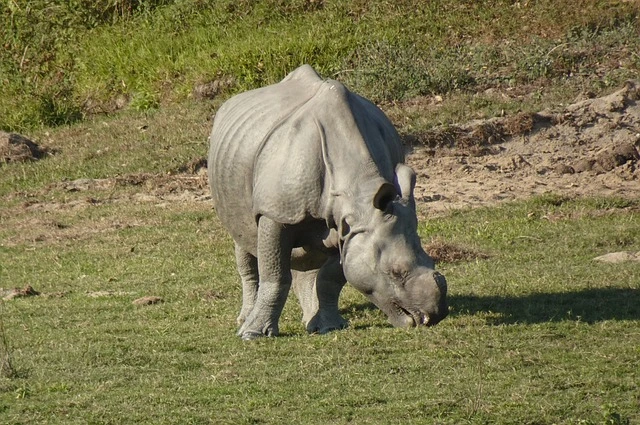
One-horned Rhino in Dudhwa
Rhino Behavior in the Wild – What to Watch For
Spotting a one-horned rhino in the wild is a special moment, but watching how they behave makes it even better. Here’s what to keep an eye out for during a safari:
Mud Baths and Wallows
Rhinos love wallowing in muddy ponds and swampy patches. It cools their body, protects their skin from sunburn, and helps get rid of ticks and parasites. You’ll often see them lying in shallow pools, fully relaxed, or giving themselves a good roll in the mud.
Grazing and Feeding
Rhinos feed mostly on grass, using their flexible upper lip to grab and pull clumps of vegetation. You might see them moving slowly with their head down, tearing grass or browsing on leaves and branches. They often feed in the early morning or late afternoon.
Aggression Displays
Male rhinos can get territorial, especially during the mating season. Fights are rare, but when they do happen, they involve loud snorts, mock charges, and horn-to-horn clashes. Even without a fight, a raised tail and snorting sounds can be signs of a warning.
Mothers with Calves
If you’re lucky, you may spot a female with her calf. The young one usually stays close to its mother, following her around and sometimes playfully running in circles. Mothers are very protective, so guides keep a safe distance during such sightings.
Watching these moments from a safari jeep, especially in places like Kaziranga or Dudhwa, gives you a deeper look into the life of these gentle giants. It’s not just about the sighting, it’s about understanding their world.
Rhino Subspecies and Global Status
There are five surviving rhino species in the world – two in Africa and three in Asia. Each plays a key role in its habitat, but all face serious threats from poaching and habitat loss.
African Rhinos
- White Rhino: The largest rhino species. Mostly found in southern Africa. Divided into southern and critically endangered northern subspecies.
- Black Rhino: Smaller and more aggressive. Critically endangered. Lives in eastern and southern Africa.
Asian Rhinos
- Indian Rhino (Greater One-Horned Rhino): Found in India and Nepal. Known for its single horn and armor-plated look. Second largest rhino species. A conservation success, though still vulnerable.
- Javan Rhino: Critically endangered. Fewer than 80 remain, all in a single park in Indonesia.
- Sumatran Rhino: The smallest rhino species. Critically endangered, with fewer than 50 left. Lives in fragmented forests of Sumatra and Borneo.
Among all these, the Indian rhino has made the strongest recovery. With continued protection and support from local communities, its future looks more hopeful than most.
Interesting Facts About the Indian Rhino
- Rhino horn is not made of bone – It is composed of keratin, the same protein found in human fingernails.
- Despite their size, rhinos are excellent swimmers and enjoy long dips in the water.
- They have no natural predators except for tigers, which may prey on young calves.
- Rhinos are known as “ecosystem engineers” because their grazing helps maintain healthy grasslands.
- They use mud baths as sunscreen, protecting their skin from sunburn and parasites.
- Their population dropped to just 200 individuals in the early 20th century, but conservation efforts have revived their numbers.
- Indian rhinos can run faster than a human sprinter, reaching speeds of up to 40 km/h!
The Indian One-Horned Rhinoceros is a true conservation success story, proving that dedicated efforts can help save endangered species. Seeing one in the wild is an unforgettable experience, reminding us of the importance of protecting these gentle giants and their habitats.

